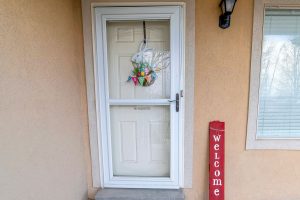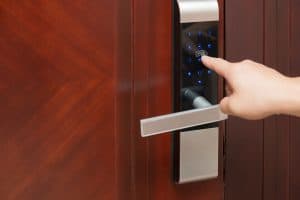Combination locks are notoriously well-known for their keyless locking mechanism. Just by using a set of symbols, you activate the mechanism. Some people might assume that they're less reliable for protecting valuable possessions--and to some extent, that's true--but there are also big advantages to using locks that don’t require using a physical key. But when you first get a combination lock, does it come with code? We've compiled the basic know-how for you.
Usually, when you purchase a sealed combination lock in a shop, you will notice that the device is securely fastened. However, a combination lock comes with a factory code, which you can use to unlock the device and set a more personal code of your choice. The factory code is found inside the package or sometimes, found stuck on the body of the lock.
This kind of lock is not complicated to use. In fact, combination locks are used for lockers, luggage, and gates, among other things. Still, it's important to know what locking and unlocking combination locks entail because whenever we think of a locking mechanism, we usually imagine a lock with a key. Keep on reading to learn about coding a combination lock and opening a 3-digit or more combination lock.
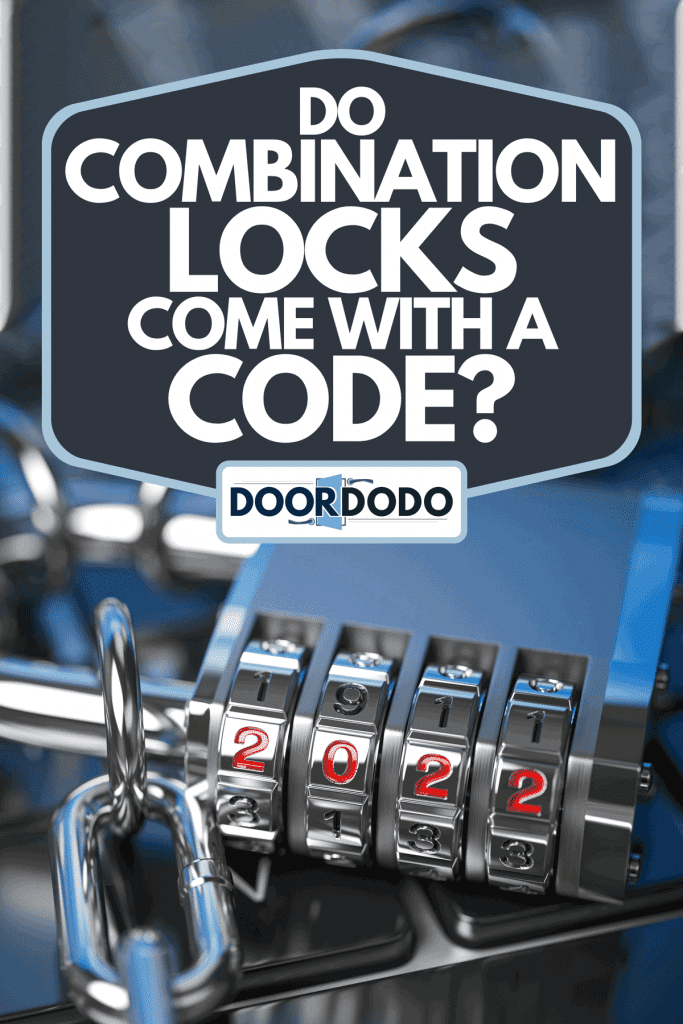
Combination Locks Come with a Code
In most cases, you will find the factory code inside the package or in the instruction packet. There are also some brands that practice sticking the factory code on the body of the device but security-wise, this isn't so practical. Nowadays, the combination lock comes with a "000" or "0000" factory code to unbolt the shackle from the body.
Depending on the type of combination lock, you can continue to reset and personalize the device with a new code. Combination locks are easy to set up and to use but unlike the keyed locks, it does require you to know about how the device works and its locking mechanism.
What are the Types of Combination Locks?
By definition, combination locks are keyless devices that use dials and wheels to activate the locking mechanism. These are convenient compared to keyed locks, but it cannot be denied that keyed locks are far superior in terms of security. There are two common types of combination locks:
1. Rotary/Single Dial Combination Lock
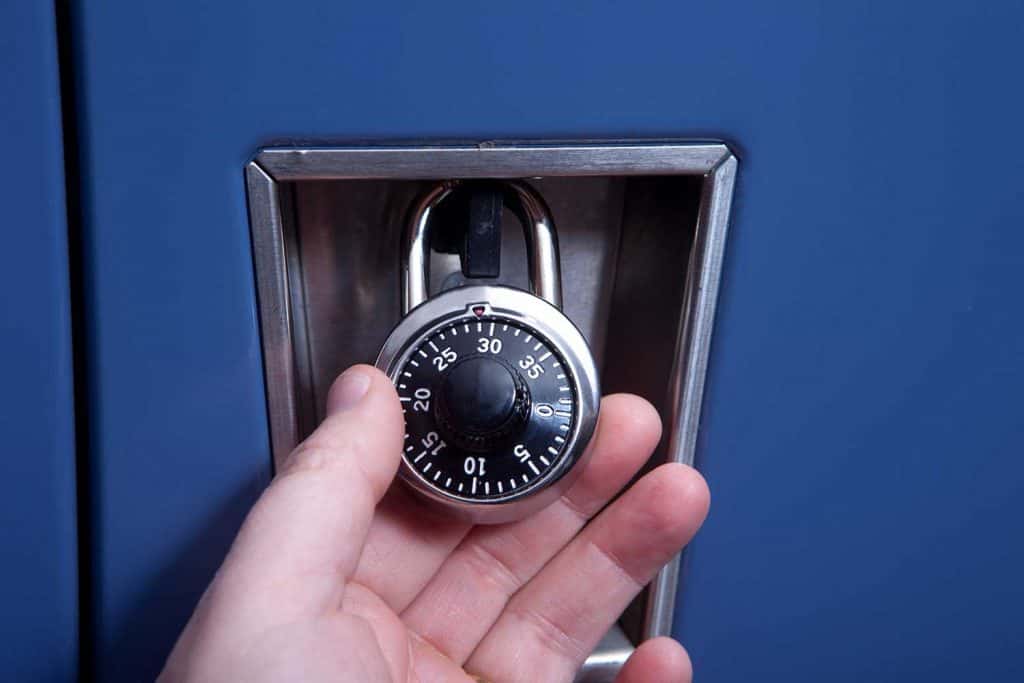
You may be familiar with rotary or single-dial combination locks used for lockers and luggage, for instance. The locking mechanism is activated by turning the dial toward the numerical code with alternate clockwise and counterclockwise movements. Regardless of the number of digits in the code, you turn clockwise toward the first digit, counterclockwise toward the second, clockwise again on the third, and so on.
The locking mechanism is dependent on a spindle with a drive cam, which is a flat wheel at the base of the spindle. A drive pin protrudes from the drive cam and it begins the unlocking mechanism.
Between the drive cam and the dial are a set of wheels that have a notch each. This indention is called a wheel fly. Once the dial positions the drive pin to the wheel fly and hits the digit of the code, the device opens.
Click here to see MasterLock combination padlock on Amazon.
2. Multiple Dial Combination Lock
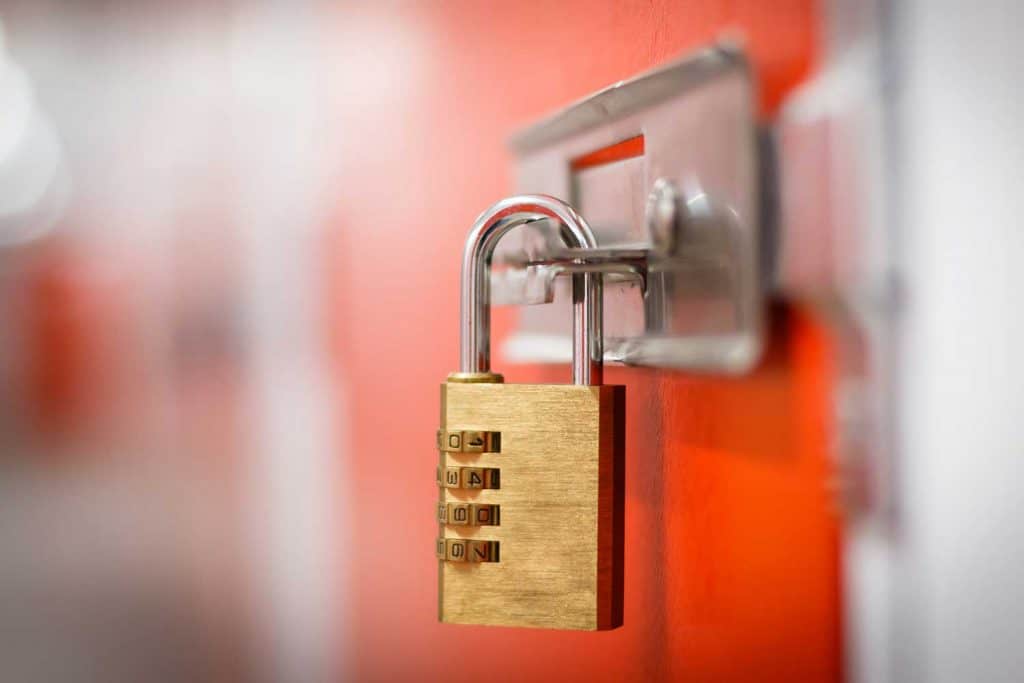
For this type of combination lock, the locking mechanism is reliant on a pin with ridges or teeth. Inside the device, there are rotating discs for every digit in the code, and the pin with teeth cuts through them. Each rotating disc has notches in them that correspond to the pin. The device unlocks by twisting and positioning the rotating discs in symmetry to the pin.
Click here to see Squire 4-dial padlock on Amazon.
How do you Code a Combination Lock?
The first part is simple. You have to set the dials on the device to the factory code provided. Having done that and the device unlocked, pull up the shackle from the body and twist it counterclockwise to a 90-degree angle. Just enough for it to be perpendicular to the body.
After that, press down on the shackle hard. A small part recedes down the base from where the shackle and the body meets.
Do not let go of the pressure. While still putting force down the shackle, rotate it counterclockwise again to a 90-degree angle. This time, the shackle faces away from one side of the body. During this, you can set a new and personalized code.
Make sure to keep note of the new combination. To complete coding a combination lock, simply turn the shackle back to its normal position.
How do you Open a 3-Digit Combination Lock?
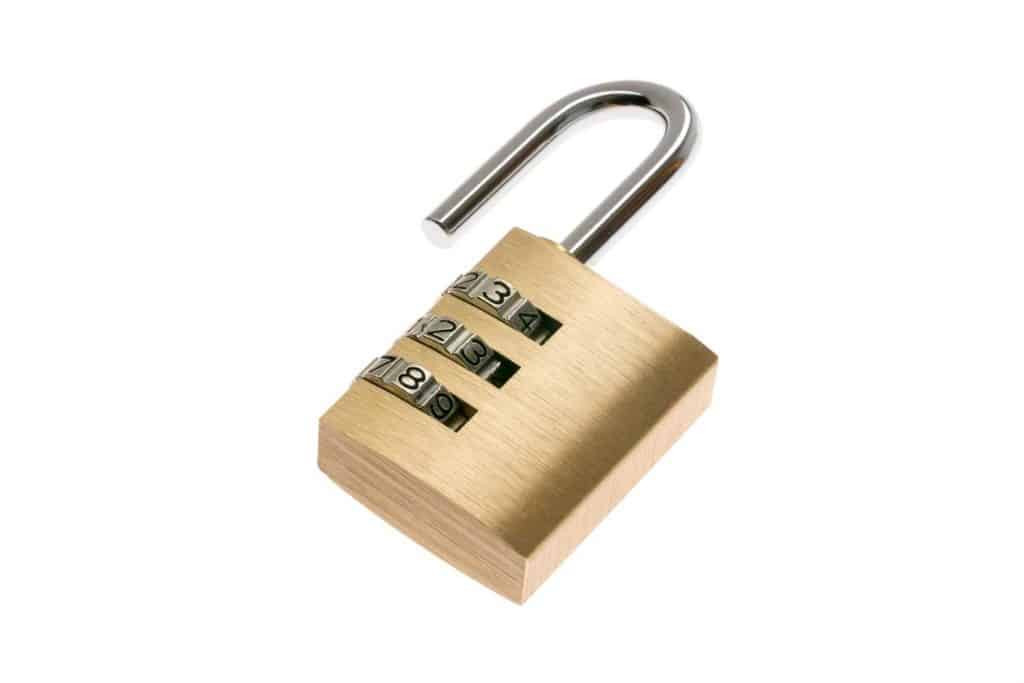
Hold the device with the dial facing you. The first step is to apply only a bit of pressure to pull the U-shaped shackle upward. Too much pressure makes it hard for you to turn the dial while too little makes the dial quickly.
Using the factory code provided, turn the dial to the right or counterclockwise as many times until you are met with resistance. Stop when the marker points at the first digit of the code.
Next, turn the dial to the left or counterclockwise for a 360-degree turn. Past the first digit of the code, position the second digit of the code right under the marker.
For the third digit of the code, turn the dial to the right or clockwise to position the last digit under the marker. Lastly, while holding the body of the device in place, pull up the shackle to unlock it.
How do you Unlock a Combination 4-Number Lock?
A multiple dial combination lock is faster to unlock compared to the rotary or single dial combination lock. All you need is the factory code or the code you have already set it to.
Starting from the right, turn the first rotating disc or dial, either clockwise or counterclockwise, to the first digit of the code. Before moving on to the next dial, check if is centered on the body.
Position the remaining three dials left in order and to the corresponding digits of the code. Like the first dial, you can rotate the rest either clockwise or counterclockwise.
After these steps, double-check to see if all the rotating discs are lined up together and centered to the device. Lastly, hold the body of the device securely and pull the shackle upward to unlock.
Check out this post: "Combination Lock Stuck—What To Do?"
How do you Open a Combination Lock if you Forgot the Code?
Some combination locks have key control, which means that if a combination lock mechanism doesn't work, a key can be used to open the device and bypass using the code. But ultimately, combination locks use dials instead of keys. What happens if you forget the code? Is breaking apart the device the only resort?
Click here to see this combination lock with bypass key on Amazon.
Yes, you can open a combination lock if you forgot the code, and there's no need to call for a locksmith just yet. To do this, hold the combination lock with the dial facing you. Apply pressure when you pull the shackle upward. Pressure here is important because if pressure is too much, the dial will click at every number whereas if pressure is too little, there won't be a click at all.
Turn the dial clockwise until you hear only one audible click. To get the first digit of the combination code, just add 5 to the number you heard it on. Turn the dial again but this time in a counterclockwise movement.
After one full turn, continue turning the dial until you feel resistance. Take note of that number because that is the second digit of the combination code.
There are too many probabilities to figure out a complete set of a 3-digit code but by the time you finish figuring out the second digit, the third digit won't be too hard to find. You can open the combination lock by turning the dial and trying out every numerical symbol until you meet resistance on one of the numbers. This is the third and final digit of the code.
If this method does not work, you can try using a shim or a wedge to force open the lock or seek assistance from the lock manufacturer with the lock serial number ready.
In Closing
Combination locks come with a factory code. Sometimes it's stuck on the back of the device, it's in the package, or it's in the instruction packet. usually, factory codes are set to "000" or "0000." When you open the package, the lock's shackle is securely fastened to the body and you would need to turn the dial a few times to open it using the factory code.
In terms of reliability, keyed locks are superior to combination locks. It is much harder to pick a keyed lock and it is easy to forget codes. However, it's not to say that combination locks cannot keep valuables safe. They simply target a different niche. Combination locks are best used for lockers, gates, luggage, or other, similar items.
Learn why push doors have handles here.




